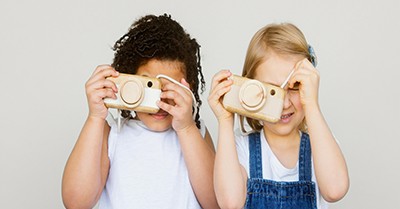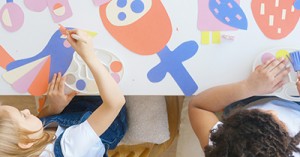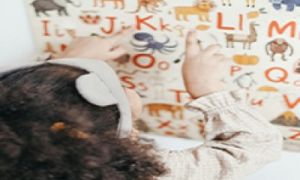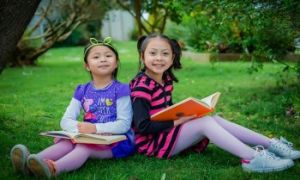MTOP (My Time, Our Place) Outcome 1 focuses on children having a strong sense of identity. This means that in school-age care settings, children develop a sense of belonging when they feel accepted and can build relationships with peers and educators. Their confidence, motivation, and self-identity are shaped by their interactions with others.
Key Aspects of MTOP Outcome 1:
- Children feel safe, secure, and supported— They form trusting relationships, express their feelings openly, and engage confidently in social and physical environments.
- Children develop autonomy, interdependence, resilience, and a sense of agency – They participate in play and leisure, cooperate with others, take risks in decision-making, and persist through challenges.
- Children develop knowledgeable and confident self-identities – They recognize their uniqueness, share their cultural backgrounds, and feel empowered to express themselves.
- Children learn to interact with care, empathy, and respect – They build friendships, acknowledge the rights of others, and engage in positive social interactions.
Educators play a crucial role in fostering these aspects by creating nurturing environments, supporting children through transitions, and encouraging self-expression.
Practical Examples Of Sub Outcomes
Here are some practical examples of how children can achieve the sub-outcomes of MTOP Outcome 1: Children Have a Strong Sense of Identity:
1.1 - Children feel safe, secure, and supported
- A child confidently approaches an educator to share their thoughts or ask for help.
- Children greet each other warmly and engage in friendly conversations.
- A child expresses their emotions openly, knowing they will be heard and respected.
1.2 - Children develop autonomy, interdependence, resilience, and a sense of agency
- A child independently chooses an activity that interests them.
- Children collaborate to solve a problem during a group project.
- A child persists in completing a challenging puzzle, demonstrating resilience.
1.3 - Children develop knowledgeable and confident self-identities
- A child shares a story about their cultural background with peers.
- Children engage in role-play, exploring different perspectives and identities.
- A child proudly presents their artwork, expressing their individuality.
1.4 - Children learn to interact with care, empathy, and respect
- A child comforts a friend who is feeling upset.
- Children take turns and share materials during a group activity.
- A child listens attentively to a peer’s ideas and responds with kindness.
Educators can support these outcomes by fostering inclusive environments, encouraging self-expression, and modeling positive interactions.
Applying Sub outcomes Into Practice
Applying the MTOP Outcome 1 sub-outcomes into practice involves creating meaningful experiences that support children's sense of identity. Here are some ways educators can implement them:
1.1 - Children feel safe, secure, and supported
- Routine & Stability: Establish predictable routines to help children feel comfortable.
- Trusting Relationships: Spend time engaging in conversations, listening to children's ideas, and responding sensitively.
- Safe Spaces: Provide cozy areas where children can relax and express themselves freely.
1.2 - Children develop autonomy, interdependence, resilience, and a sense of agency
- Choice & Independence: Allow children to select activities based on their interests.
- Problem-Solving: Encourage teamwork and collaboration in group projects.
- Resilience Building: Support children in overcoming challenges by praising their efforts and persistence.
1.3 - Children develop knowledgeable and confident self-identities
- Cultural Sharing: Create opportunities for children to share traditions, languages, and personal stories.
- Self-Expression: Provide creative outlets like art, music, and storytelling.
- Empowerment: Celebrate children's achievements and encourage them to take pride in their uniqueness.
1.4 - Children learn to interact with care, empathy, and respect
- Social Skills Development: Model respectful interactions and encourage children to listen to each other.
- Conflict Resolution: Guide children in resolving disagreements peacefully.
- Community Engagement: Involve children in activities that promote kindness and inclusivity.
Educators play a vital role in fostering these outcomes by creating environments that support children's emotional and social growth.







 Here is the list of the EYLF Learning Outcomes that you can use as a guide or reference for your documentation and planning. The EYLF
Here is the list of the EYLF Learning Outcomes that you can use as a guide or reference for your documentation and planning. The EYLF The EYLF is a guide which consists of Principles, Practices and 5 main Learning Outcomes along with each of their sub outcomes, based on identity,
The EYLF is a guide which consists of Principles, Practices and 5 main Learning Outcomes along with each of their sub outcomes, based on identity, This is a guide on How to Write a Learning Story. It provides information on What Is A Learning Story, Writing A Learning Story, Sample
This is a guide on How to Write a Learning Story. It provides information on What Is A Learning Story, Writing A Learning Story, Sample One of the most important types of documentation methods that educators needs to be familiar with are “observations”. Observations are crucial for all early childhood
One of the most important types of documentation methods that educators needs to be familiar with are “observations”. Observations are crucial for all early childhood To support children achieve learning outcomes from the EYLF Framework, the following list gives educators examples of how to promote children's learning in each individual
To support children achieve learning outcomes from the EYLF Framework, the following list gives educators examples of how to promote children's learning in each individual Reflective practice is learning from everyday situations and issues and concerns that arise which form part of our daily routine while working in an early
Reflective practice is learning from everyday situations and issues and concerns that arise which form part of our daily routine while working in an early Within Australia, Programming and Planning is reflected and supported by the Early Years Learning Framework. Educators within early childhood settings, use the EYLF to guide
Within Australia, Programming and Planning is reflected and supported by the Early Years Learning Framework. Educators within early childhood settings, use the EYLF to guide When observing children, it's important that we use a range of different observation methods from running records, learning stories to photographs and work samples. Using
When observing children, it's important that we use a range of different observation methods from running records, learning stories to photographs and work samples. Using This is a guide for educators on what to observe under each sub learning outcome from the EYLF Framework, when a child is engaged in
This is a guide for educators on what to observe under each sub learning outcome from the EYLF Framework, when a child is engaged in The Early Years Learning Framework describes the curriculum as “all the interactions, experiences, activities, routines and events, planned and unplanned, that occur in an environment
The Early Years Learning Framework describes the curriculum as “all the interactions, experiences, activities, routines and events, planned and unplanned, that occur in an environment


